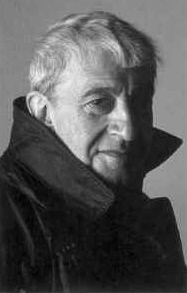Embedded pursuant to the standard YouTube licence
In the past I have been rather critical of the Royal Opera House's live ballet transmissions to cinemas. In The Royal Ballet's Swan Lake - that's more like it 25 March 2015 I wrote:
"I have not been too kind about HDTV transmissions of the Royal Ballet's performances from Covent Garden ("¡Por favor! Don Quixote streamed to Huddersfield" 13 Oct 2013, Good Quality Hamburger at the Very Least - Giselle streamed from Covent Garden 27 Jan 2014" and "Manon Encore at the Huddersfield Odeon" 20 Oct 2014) though I recanted slightly over The Winter's Tale ("The Winter's Tale - Time to eat my Hat" 29 April 2014). In general I have much preferred Pathe-Live's transmissions from Moscow."March's Swan Lake was much better and yesterday's Romeo and Juliet was just right. It was as good as anything that has been transmitted from Moscow and I congratulate Ross MacGibbon and his team on the screening.
A large part of the reason for last night's success was the engagement of Ore Oduba. He is a skilled TV presenter in a way that Darcey Bussell is not. He has an easy manner and conveyed the sense of excitement and occasion of the man on the Clapham smartphone so much better than the stream of gushing tweets that had irritated me so much on previous occasions. Oduba also freed up Bussell for some important interviews. There were some interesting contributions from Lady MacMillan and Donald MacLeary whom I saw last year at the London Jewish Cultural Centre (see A Minor Miracle - Bringing Le Baiser de la fée back to Life 2 June 2015). I was also impressed by the interview with Garbiel Prokofiev who wrote the music for Shobana Jeyasingh's La Bayadère - the Ninth Life (see La Bayadère - The Ninth Life 29 March 2015). I also enjoyed the conversations with Koen Kessels and Kevin O'Hare as well as the snippets form Steven McRae, Sarah Lamb and others.
The great advantage of live transmissions is that you get to see the detail of the ballet from the close ups. These include facial expressions such as the shame on the faces of Romeo and his mates when they are ticked for brawling off by Escalus, the parties' disdain when they are forced to reconcile, Tybalt's permanent sneer and the vengeful grief of Lady Capulet. Cinema audiences also got a chance to examine the props such as Juliet's poppet in Act I and the vial of liquid that would suspend her animation which she approached with such enormous trepidation. The close ups also allowed me to concentrate on important parts of the choreography such as the courous en pointe as Juliet recoils from Paris the significance of which I had never appreciated on all the occasions that I have seen it on stage.
McRae and Lamb were magnificent in the title roles. I have always liked them in every ballet in which I have seen them perform. A special word of praise is due to Gary Avis who is another of my favourites. He danced Tybalt and was excellent. All were good - especially Alexander Campbell as Mercutio, Ryoichi Hirano as Paris, Elizabeth McGorian as Lady Capulet, Genesia Rosato as the nurse, Alastair Marriott as Friar Lawrence and Bennet Gatside as Escalus. It was also great to see Nicholas Georgiadis's rich designs again. They are as awesome now as they were when I first saw that ballet four and a half decades ago.
Romeo and Juliet is not a short ballet but seldom has an evening passed so quickly. Finally, although I promoted the screening in Centenary Square (see Ballet for Everybody in Centenary Square 4 June 2015) I actually saw it in the Pictureville cinema at the National Media Museum a few hundred yards away. There may well have been a party atmosphere in the Square and other big screens up and down the country and you can get in for free but it was a bit chilly on the first night of Autumn, the seats are hard and the screen and audio leave a lot to be desired. I like my comfort at my time of life and the Museum with its bar, restaurant and convenient parking is one of the most civilized venues I know anywhere in the world.
Postscript
Alison Penfold who lives in London drew my attention to the fact that the big screen in Centenary Square was out of action on Tuesday night. In response to my post:
"There was a quite a lot of price variation in Bradford where there was a big screen in Centenary Square and folk could see the show for free."She wrote:
"Except they couldn't: I believe there was some problem and the screening was cancelled?"That was news to me and I was only a few hundred yards from Centenary Square. It turns out that Alison was right. The Royal Opera House tweeted
The #BPBigScreens at Centenary Square Bradford has been cancelled due to technical difficulties. Apologies for the inconvenience ^H
— Royal Opera House (@RoyalOperaHouse) September 22, 2015
It is a great shame that that happened. Bradford has many different communities and cultures and Tuesday would have been a great opportunity to introduce ballet to folk who would never otherwise see it.Further Information
See Live Performances from the Bolshoi and Covent Garden 20 Sept 2015

